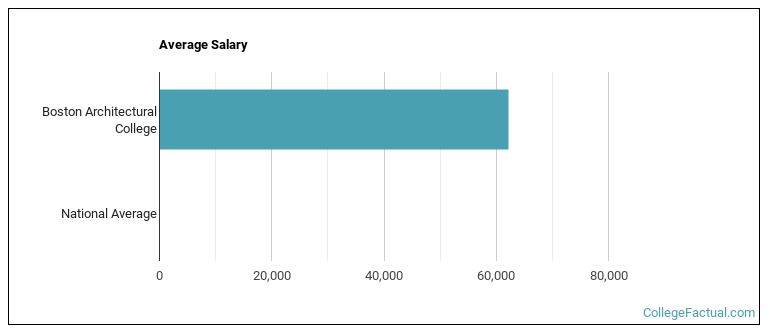 by our College Data Analytics Team
by our College Data Analytics TeamExplore the best ranked schools for the programs you are most interested in.
Boston Architectural College was not ranked in College Factual's 2025 Best Overall Colleges report. This could be for a number of reasons, including lack of data.
Since Boston Architectural College has an open admissions policy, being accepted to the school isn't that hard. However, a full basic things - such as a high school diploma or equivalent - may be required. Also, go over your application to make sure it is complete before you submit it.
At Boston Architectural College, the student to faculty ratio is an excellent 5 to 1. That's much better than the national average of 15 to 1. This indicates that many classes will probably be small, and students will have ample opportunites to work closely with their professors and classmates.
Another measure that is often used to estimate how much access students will have to their professors is how many faculty members are full-time. The idea here is that part-time faculty tend to spend less time on campus, so they may not be as available to students as full-timers.
The full-time faculty percentage at Boston Architectural College is 8%. This is lower than the national average of 47%.
The freshmen retention rate of 82% tells us that most first-year, full-time students like Boston Architectural College enough to come back for another year. This is a fair bit higher than the national average of 68%. That's certainly something to check off in the good column about the school.
When we say that a student has graduated on time, we mean that they have finished their bachelor's degree within four years. The on-time graduation rate at Boston Architectural College is 4%. That's lower than the national rate of 33.3%
Find out more about the retention and graduation rates at Boston Architectural College.
During the 2017-2018 academic year, there were 336 undergraduates at Boston Architectural College with 251 being full-time and 85 being part-time.
The net price is calculated by adding tuition, room, board and other costs and subtracting financial aid.Note that the net price is typically less than the published for a school. For more information on the sticker price of Boston Architectural College, see our tuition and fees and room and board pages.
It's not uncommon for college students to take out loans to pay for school. In fact, almost 66% of students nationwide depend at least partially on loans. At Boston Architectural College, approximately 35% of students took out student loans averaging $10,708 a year. That adds up to $42,832 over four years for those students.
Get more details about paying for Boston Architectural College.

See which majors at Boston Architectural College make the most money.
Get more details about the location of Boston Architectural College.

Contact details for Boston Architectural College are given below.
| Contact Details | |
|---|---|
| Address: | 320 Newbury Street, Boston, MA 02115-2703 |
| Phone: | 617-585-0200 |
| Website: | www.the-bac.edu/ |
| Most Popular Majors | Bachelor’s Degrees | Average Salary of Graduates |
|---|---|---|
| General Architecture | 111 | $55,079 |
| Architecture (Other) | 34 | NA |
| Interior Architecture | 20 | NA |
| Environmental Design | 16 | NA |
| Landscape Architecture | 10 | NA |
| Architectural History | 5 | NA |
| Real Estate Development | 3 | NA |
| Architectural Sciences & Technology | 2 | NA |
Online learning is becoming popular at even the oldest colleges and universities in the United States. Not only are online classes great for returning adults with busy schedules, they are also frequented by a growing number of traditional students.
In 2022-2023, 645 students took at least one online class at Boston Architectural College. This is a decrease from the 712 students who took online classes the previous year.
| Year | Took at Least One Online Class | Took All Classes Online |
|---|---|---|
| 2022-2023 | 645 | 375 |
| 2021-2022 | 712 | 517 |
| 2020-2021 | 742 | 742 |
| 2018-2019 | 280 | 122 |
Learn more about online learning at Boston Architectural College.
Footnotes
*The racial-ethnic minorities count is calculated by taking the total number of students and subtracting white students, international students, and students whose race/ethnicity was unknown. This number is then divided by the total number of students at the school to obtain the racial-ethnic minorities percentage.
References
More about our data sources and methodologies.